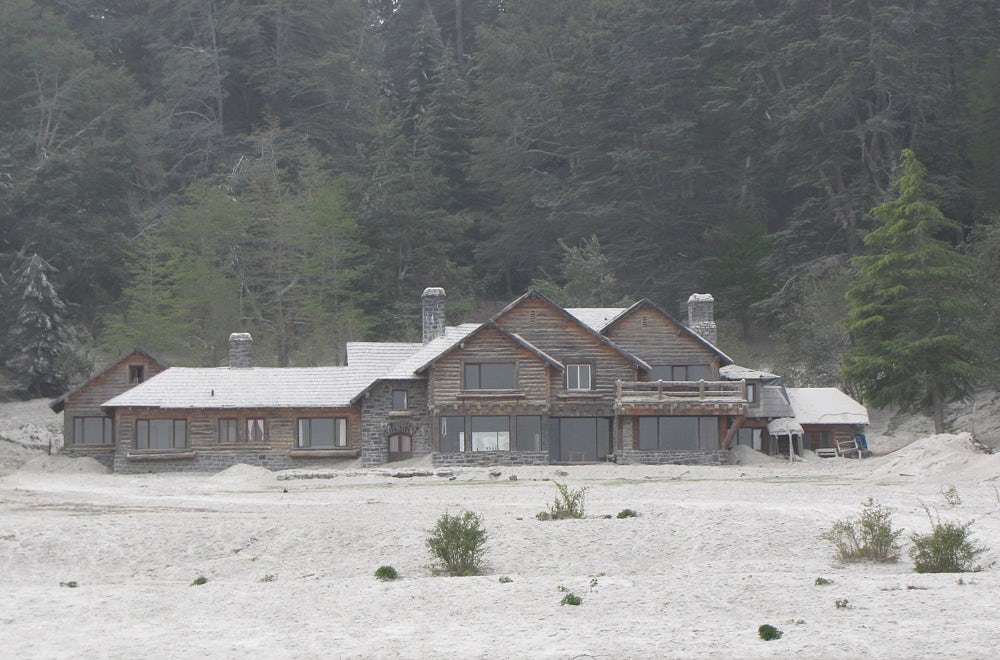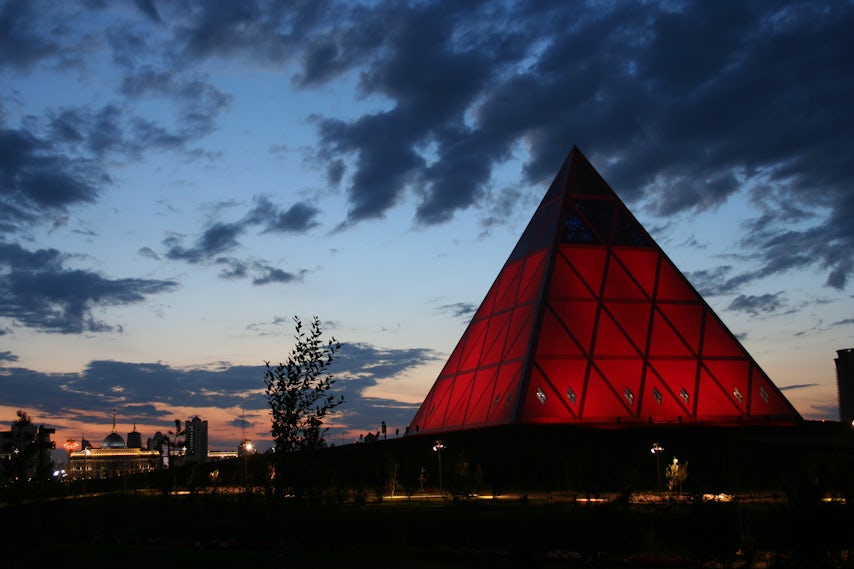Talha Fazal Ahmad Holds a degree in Architecture from the University of Illinois at Urbana-Champaign and has studied at the École nationale supérieure d’architecture in Versailles, France. His writing can be found at Mozart & Gunfire,Chicago Monitor and Buildings+Beers. He does not necessarily subscribe to all of these conspiracy theories.
The symbolism and meaning of architecture, even when explained by the architects and engineers, can often become muddy with the interpretations of scholars and the public. These interpretations can be about the design itself or about alleged events that occurred at the building in question.
At times, a building or set of buildings can become shrouded in popular — though often unsubstantiated — theories concerning covert, malicious or immoral activity. These conspiracy theories range from the location of a long-lost artifact to the shrine of a secret organization to the alleged haven for the most ruthless war criminal in modern history. The narratives of the five buildings below lead to amateur investigation, site worship and a culture of distrust in the powers that be.

The United States Bullion Depository (Fort Knox); photo credit: Cliff
5. United States Bullion Depository (Fort Knox, Kentucky)
Sometimes referred to simply as Fort Knox, this heavily fortified building houses gold reserves and other items deemed extremely valuable by the U.S. government. Designed by Louis A. Simon in the 1930s, the building holds over 4,500 metric tons of gold bullion and has been home to the Declaration of Independence, the U.S. Constitution, the Crown of St. Stephen, the Hungarian crown jewels and an official copy of the Magna Carta.
Security includes multiple fences, alarms, armed U.S. Mint Police, 30,000 active troops, snipers, Apache helicopter gunships, tanks and minefields. The vault is outfitted with a 20-ton door and 25-inch-thick casing that can survive an impact from a nuclear strike. Officials only know part of the code for added security. These elaborate measures have made conspiracy theorists allege that the vault contains not only gold bars, but also the Ark of the Covenant and the Holy Grail. Due to the elusiveness of this artifact central to Christianity, people have been speculating about its location and existence for centuries. Also purported to be housed in the complex are the locations of Noah’s Ark and the True Cross upon which Jesus was crucified.
Another bizarre theory put forth by Brad Meltzer of the History Channel show “Decoded” alleges that Fort Knox does not in fact contain any gold at all.

Via Denver International Airport Transportation Company
4. Denver International Airport (Denver, Colorado)
Denver International Airport was designed by Fentress Architects and is best remembered for its distinctive fiberglass roof in the shape of the snowy peaks of the Rocky Mountains. The unique design of the airport as well as the atypical art that decorates the walls have been the subjects of controversy and conspiracy. Conspiracy theorists have pointed out that the runways seem to resemble a swastika, while the murals that occupy the walls are said to be symbolic of the New World Order. Artist of the murals Leo Tanguma says, however, that the themes are symbolic of man-made destruction juxtaposed with peace and humanity.

Denver International Airport runways; via Charles Tilford

“The Children of the World Dream of Peace” mural; via Wally Gobetz
The dedication marker also raises questions. It contains the words “New World Airport Commission” and is inscribed with a square and compass, the telltale mark of Freemasons. Local lodges participated in the laying of the capstone, which is mounted over a time capsule. Symbols of the Masons provide further fodder for those who question the intent of the airport. Lastly, many conspiracy theorists question the reason for the airport’s construction, the most popular explanation being that underground bunkers were built for the world’s elite should a nuclear holocaust occur.

Residencia Inalco; via Diario Andino
3. Residencia Inalco (Patagonia, Argentina)
In 2011, it was announced that the house where Adolf Hitler allegedly spent his last days was for sale. Designed by architect Alejandro Bustillo in 1943, the mansion bears similarities to Hitler’s villa in the Alps, the Berghof. This conspiracy theory is firmly rooted in the belief that Hitler did not commit suicide in Germany but was part of a carefully orchestrated escape to South America that included a stop in Spain under the protection of dictator Francisco Franco.
“Proof” for this theory lies in the fact that architect Bustillo had also built many houses for Nazi fugitives residing in the area. Subsequent owners of the estate include Enrique Garcia Merou, Jorge Antonio and Jose Rafael Trozzo, all of whom have had links to German companies, powerful officials and former Nazi officers. Despite evidence strongly pointing to the death of Hitler at the end of World War II, this theory has been reintroduced with this house listing.

The Bilderberg Hotel, Oosterbeek; via Wikipedia (Michiel1972)
2. Bilderberg Hotel (Oosterbeek, Netherlands)
The Bilderberg Hotel holds the distinction of being the first meeting location and the source of the name for the Bilderberg Group. The group first met in 1954 for the purpose of fostering a better understanding between Europe and the United States. Between 120 and 150 influential leaders in politics, finance and business meet to discuss issues facing the world in annual meetings held all over the world. These meetings are subject to extreme secrecy and exclusivity to ensure that open dialogue can be maintained without outside interpretation and media fanfare.
Due to its secrecy, numerous conspiracy theories have been proposed about the intentions and aims of the Bilderberg Group. The most popular theory states that they control world politics and finance with the ultimate goal of creating a singular global government controlled by corporations and enforced through heavy militarization.

The Pyramid of Peace; via Foster + Partners
1. The Pyramid of Peace (Astana, Kazakhstan)
Designed by illustrious English architect Sir Norman Foster, the Pyramid of Peace is a large structure in the heart of the manufactured capital of Kazakhstan commissioned by controversial president Nursultan Nazarbayev. The entire capital of Astana is shrouded in conspiracy, much like the city plan of Washington, D.C.

The pyramid is where the Kazakh congress meets around a circular “sun table,” construed as a sign that the pyramid was built for sun worship. The pyramidal iconography is often attributed to sun worship, the Eye of Providence and the agenda of the Illuminati and New World Order. The Pyramid of Peace is seen by conspiracy theorists as a sign of the “power to come,” a future that will be ruled by a ruthless, singular government. The auspicious display of symbolism is seen as a way to ease the world’s population into an inevitable submission to a new status quo.
The judging process for Architizer's 12th Annual A+Awards is now away. Subscribe to our Awards Newsletter to receive updates about Public Voting, and stay tuned for winners announcements later this spring.









